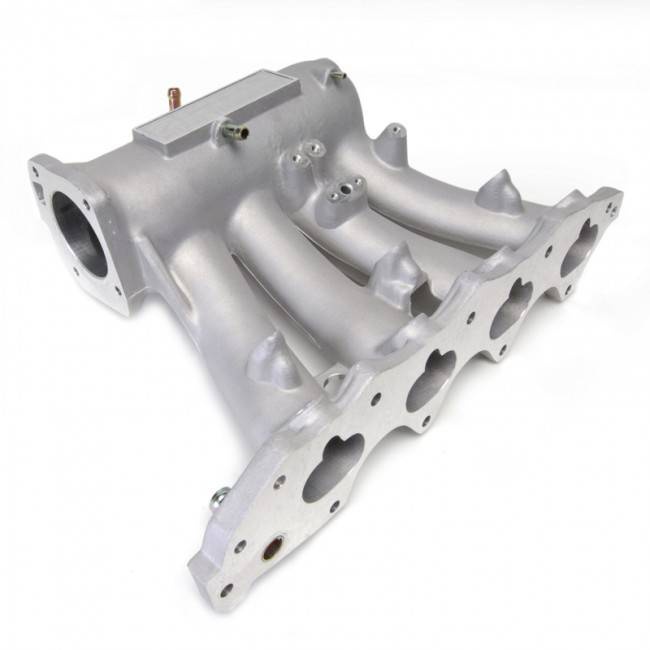The Honda RBC intake manifold is a popular upgrade among enthusiasts seeking improved performance and engine efficiency. However, like any automotive component, proper maintenance is essential to ensure optimal functionality and longevity. In this article, we'll explore some best practices for maintaining your Honda RBC intake manifold, helping you preserve its performance and reliability for years to come.
Regular Inspection
One of the most important aspects of maintaining your Honda RBC intake manifold is conducting regular inspections. Inspect the manifold and its associated components for signs of wear, damage, or leaks. Check for any cracks or corrosion on the manifold itself, as well as on the mounting surfaces and flanges. Inspect hoses, clamps, and gaskets for any signs of deterioration or leakage. Early detection of issues can prevent more significant problems down the road.
Keep it Clean
Keeping your Honda RBC intake manifold clean is crucial for maintaining optimal performance. Periodically remove the intake manifold and clean both the exterior and interior surfaces. Use a mild detergent and a soft-bristled brush to remove dirt, oil, and debris. Pay close attention to the intake runners and throttle body area, as these areas can accumulate carbon buildup over time. Cleanliness helps ensure proper airflow and prevents contaminants from entering the engine.
Inspect and Replace Gaskets
Gaskets play a critical role in sealing the intake manifold and preventing air and fluid leaks. Inspect the intake manifold gaskets regularly for signs of wear, tearing, or compression. Replace any damaged or worn gaskets promptly to maintain a proper seal and prevent vacuum leaks. When installing new gaskets, ensure that the mating surfaces are clean and free of debris to promote a secure and leak-free seal.
Monitor Coolant Levels
Some Honda RBC intake manifolds feature coolant passages to help regulate intake air temperatures. Monitor coolant levels regularly and check for any signs of leakage around the coolant passages. Low coolant levels or coolant leaks can lead to overheating issues and compromise the performance of your intake manifold. Address any coolant-related issues promptly to prevent damage to the manifold and other engine components.
Check for Vacuum Leaks
Vacuum leaks can negatively impact engine performance and fuel efficiency. Inspect vacuum hoses, fittings, and connections associated with the intake manifold for any signs of leaks or deterioration. Use a vacuum gauge or smoke tester to identify potential leak points and address them accordingly. Proper sealing of vacuum lines and connections ensures consistent vacuum pressure and optimal engine performance.
Avoid Over-Tightening Bolts
When installing or tightening bolts on the Honda RBC intake manifold, it's essential to avoid over-tightening. Over-torquing bolts can lead to deformation of the manifold or damage to the mounting surfaces, resulting in leaks and reduced performance. Use a torque wrench to tighten bolts to the manufacturer's specifications and follow the recommended tightening sequence to ensure uniform pressure distribution.
**Perform Regular Tune-Ups**
Regular engine tune-ups are essential for maintaining the overall health and performance of your vehicle, including the intake manifold. Replace spark plugs, ignition coils, and fuel filters at the recommended intervals to ensure efficient combustion and optimal engine performance. A well-maintained engine operates more smoothly and efficiently, minimizing stress on the intake manifold and other components.
Avoid Excessive Heat Exposure
Excessive heat can degrade the performance and durability of the Honda RBC intake manifold. Avoid prolonged exposure to high temperatures, such as those generated by aftermarket turbochargers or exhaust systems. Ensure proper heat shielding and insulation around the intake manifold to minimize heat soak and thermal stress. Additionally, allow the engine to cool down sufficiently before performing maintenance or modifications to prevent heat-related damage.
Conclusion
Proper maintenance is essential for preserving the performance and reliability of your Honda RBC intake manifold. By following these best practices, you can ensure that your intake manifold operates at its peak efficiency and longevity. Regular inspection, cleanliness, gasket replacement, coolant monitoring, vacuum leak detection, proper bolt tightening, regular tune-ups, and heat management are key aspects of maintaining your intake manifold. By investing time and effort into maintenance, you can enjoy the benefits of improved engine performance and driving experience for years to come.
For more info: SpeedFactory Racing Dual Backdoor Intercooler


No comments yet